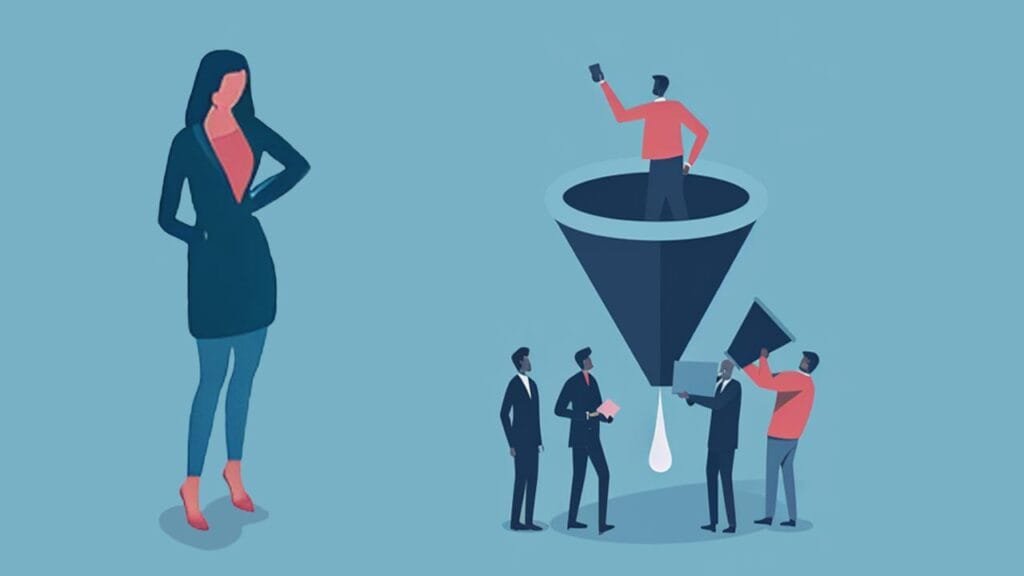ChatGPT Prompt will save you and I time, a lot of time!
I’ve been using ChatGPT Prompts for about a year now and I believe it has fundamentally changed my business. It’s also allowed me to open up to new business models I would not have the opportunity to.
Creating a ChatGPT Prompt for a sales funnel involves outlining specific details and objectives for the funnel, which a language model like GPT-4 can then use to generate a structured plan. To craft an effective ChatGPT Prompt, consider these elements:
- Objective of the Funnel: Clearly state the primary goal of the sales funnel. Is it to generate leads, make sales, or perhaps to gather customer information for future marketing efforts?
- Target Audience: Describe the target audience for the funnel. Include demographic information, interests, pain points, and any other relevant details that define your ideal customer.
- Stages of the Funnel: Specify the stages you want to include in the funnel. Typical stages are Awareness, Interest, Decision, and Action, but you can customize these based on your strategy.
- Marketing Channels: Identify which channels you plan to use at each stage of the funnel, such as social media, email marketing, paid ads, content marketing, etc.
- Call to Action: Include what actions you want potential customers to take at each stage of the funnel.
- Lead Nurturing Strategy: Explain how you plan to nurture leads through the funnel. This could involve email sequences, retargeting ads, or offering value through informative content.
- Measurement and Optimization: Mention any specific metrics you’ll track to measure the funnel’s effectiveness and how you plan to optimize it over time.
- Budget and Resources: If relevant, include details about the budget and resources available for the funnel.
Based on these elements, here’s an example prompt:
The ChatGPT Prompt:
“Create a detailed plan for a sales funnel targeting [describe target audience] for [your product/service]. The funnel should guide potential customers through the stages of Awareness, Interest, Decision, and Action. Use [list marketing channels] to engage and convert leads at each stage. Develop compelling calls to action for each stage and describe a lead nurturing strategy that includes [email sequences, content marketing, etc.]. Outline key performance metrics for tracking success and suggest methods for optimization. Consider a budget of [specify budget] and the following resources: [list resources]. The goal is to [state the primary objective, such as increase sales, generate leads, etc.].”
This prompt provides a clear, structured request that can be used with a language model to generate a comprehensive sales funnel plan. Remember to tailor the specifics to your business needs and goals.
Now I’ll take a closer look at the following ChatGPT Prompt Generated sales funnel ingredients:
- Objective of the Funnel
- Target Audience
- Stages of the Funnel
- Marketing Channels
- Call to Action
- Lead Nurturing Strategy
- Measurement and Optimization
- Budget and Resources
Objective of the ChatGPT Prompt Generated Funnel
The objective of the sales funnel is to systematically guide potential customers towards making a purchase decision while optimizing for high conversion rates. This involves a series of well-planned interactions that educate, nurture, and persuade the target audience about the value of the product or service. A well-structured sales funnel not only increases sales but also builds brand loyalty and customer engagement. Key objectives may include:
- Lead Generation: Attracting potential customers to enter the funnel.
- Customer Education: Providing information about the product or service.
- Engagement and Relationship Building: Creating a connection with the audience to foster trust and brand loyalty.
- Conversion and Sales: Encouraging prospects to make a purchase.
- Post-Sale Relationship Management: Ensuring customer satisfaction and encouraging repeat business and referrals.
Each stage of the funnel should be designed to meet these objectives, with specific strategies and tactics tailored to guide the customer journey effectively.
Target Audience
Identifying and understanding the target audience is crucial for the success of the sales funnel. This involves:
- Demographics: Age, gender, location, income level, education, and occupation.
- Psychographics: Interests, lifestyle, values, attitudes, and behaviors.
- Needs and Pain Points: Problems the audience faces that your product or service can solve.
- Customer Journey: Understanding where the audience is in the buying process.
- Customer Behavior and Preferences: Online behavior, preferred communication channels, and purchasing habits.
By understanding these aspects, the sales funnel can be tailored to address the specific needs and preferences of the target audience, increasing the likelihood of engagement and conversion.
Stages of the Funnel
A typical sales funnel includes several stages, each designed to move prospects closer to a purchase:
- Awareness: The top of the funnel, where potential customers first learn about your product or service. Strategies include content marketing, social media campaigns, and SEO.
- Interest: Prospects show interest and seek more information. Email marketing, targeted content, and engaging social media posts are effective here.
- Decision: Leads are considering a purchase and comparing options. This stage includes product demos, free trials, customer testimonials, and persuasive sales copy.
- Action: The final stage where prospects make a purchase decision. Clear calls to action, limited-time offers, and streamlined checkout processes can enhance conversions.
- Retention (Post-Purchase): Focusing on customer satisfaction, loyalty programs, and follow-up communication to encourage repeat purchases and referrals.
Each stage requires different marketing strategies and content types to effectively move prospects through the funnel.
Marketing Channels
Selecting the right marketing channels is essential for effectively reaching and engaging your target audience. Key channels include:
- Social Media: Platforms like Facebook, Instagram, LinkedIn, and Twitter are vital for brand awareness and engagement. Tailoring content to each platform’s audience is crucial.
- Email Marketing: Personalized email campaigns can nurture leads through the funnel by providing valuable content, promotional offers, and updates.
- Content Marketing: Blogs, videos, podcasts, and infographics that provide valuable information can attract and retain an audience, positioning your brand as a thought leader.
- Search Engine Optimization (SEO): Optimizing your website and content for search engines increases visibility and drives organic traffic.
- Paid Advertising: Pay-per-click (PPC) campaigns on search engines and social media can target specific audience segments and drive traffic and conversions.
- Affiliate Marketing: Partnering with affiliates can expand your reach and bring in leads through third-party marketers.
- Event Marketing and Webinars: Hosting or participating in events and webinars can establish direct connections with potential customers.
Each channel should align with the stages of the sales funnel to create a cohesive and effective marketing strategy.
Call to Action
A CTA is a directive to the audience to take an immediate action, crucial for moving leads through the sales funnel. Key considerations include:
- Clarity and Relevance: The CTA should be clear and directly related to the stage of the funnel, guiding the user on what to do next.
- Visibility and Design: CTAs should be prominently placed and visually appealing to catch the user’s attention.
- Urgency and Incentive: Phrases like “limited time offer” or “sign up today” create urgency. Offering incentives like free trials or discounts can motivate action.
- A/B Testing: Regularly testing different CTAs can help identify which ones resonate most with your audience.
Effective CTAs vary at each stage of the funnel, from encouraging newsletter sign-ups to guiding users to a purchase.

Lead Nurturing Strategy
This involves building relationships with potential customers regardless of their timeline to purchase. Effective strategies include:
- Personalized Email Campaigns: Segmenting your email list and sending personalized messages based on the user’s interaction with your brand.
- Educational Content: Providing valuable content that addresses customer questions and pain points.
- Retargeting Campaigns: Using online ads to target users who have shown interest in your products or services.
- Regular Follow-ups: Keeping in touch with leads through scheduled emails, calls, or messages.
- Customer Journey Mapping: Understanding and addressing the needs of leads at each stage of their journey.
A successful lead nurturing strategy increases the chances of leads moving through the funnel and converting into customers.
Measurement and Optimization
This involves tracking key metrics and refining the sales funnel for better performance. Focus areas include:
- Conversion Rates: Monitoring conversion rates at each funnel stage to identify bottlenecks.
- Customer Acquisition Cost (CAC): Calculating the cost of acquiring a new customer to ensure profitability.
- Return on Investment (ROI): Measuring the ROI of different marketing channels and strategies.
- Customer Feedback: Gathering and analyzing customer feedback to improve the funnel.
- A/B Testing: Continuously testing different elements of your funnel to find the most effective strategies.
Regularly reviewing and optimizing these metrics ensures the sales funnel remains efficient and effective over time.
Budget and Resources
Planning your budget and allocating resources effectively is crucial for funnel success. Considerations include:
- Financial Planning: Allocating budget to different stages of the funnel and marketing channels based on their effectiveness and ROI.
- Human Resources: Ensuring you have the right team in place for strategy, content creation, analysis, and customer service.
- Technology and Tools: Investing in CRM software, marketing automation tools, analytics platforms, and other technologies to streamline processes and gather insights.
- Training and Development: Providing training for your team on the latest marketing trends and technologies.
A well-planned budget and resource allocation enable you to execute your sales funnel strategy effectively and achieve your business objectives.









Leave A Comment